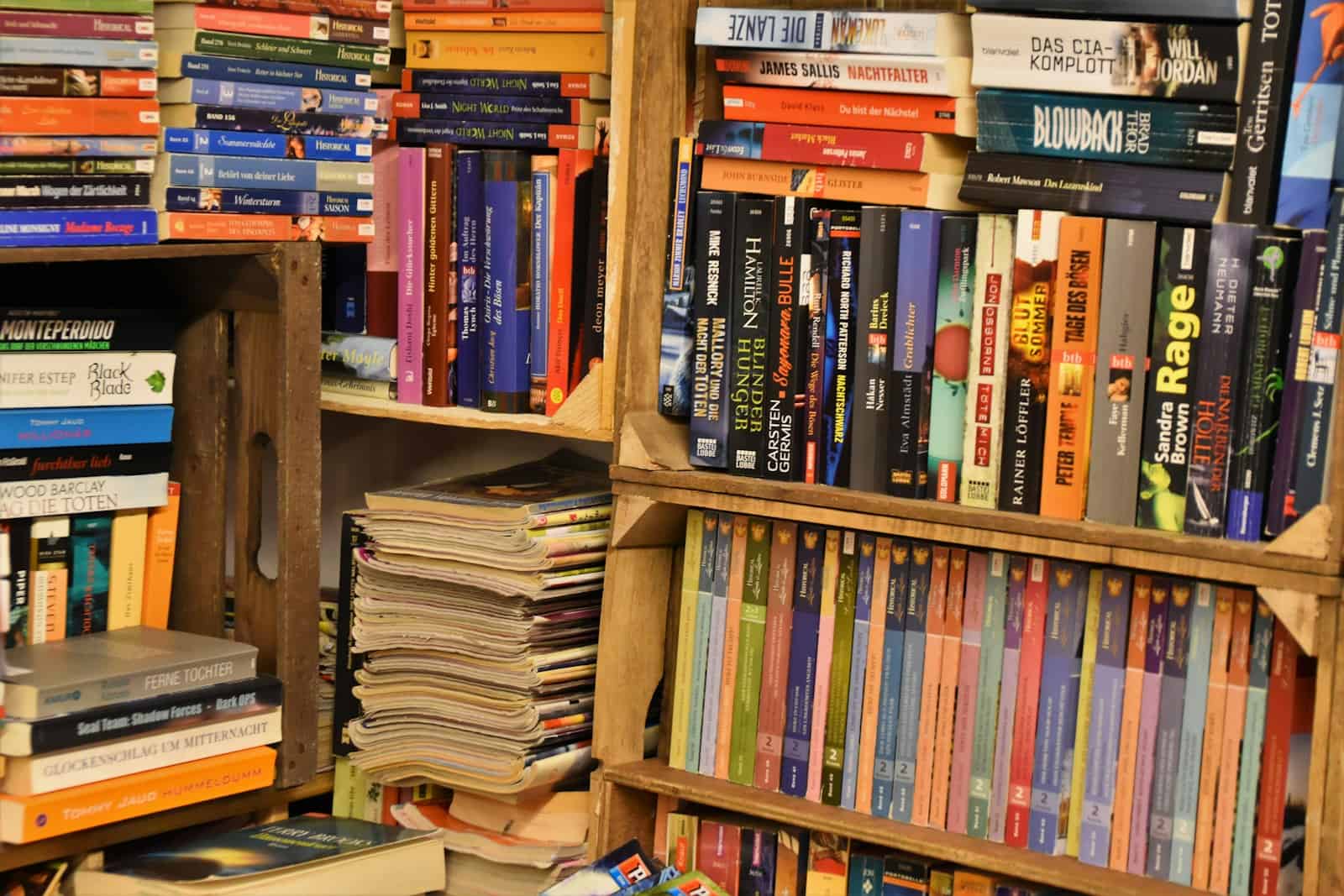
Photo by Waldemar on Unsplash
How Should Retailers Handle Buying and Selling Used Books?
Other than recycling, there are many advocates supporting the notion that buying secondhand books is a sustainable choice that reduces the environmental impact by skipping the resource-intensive production process of new books. It helps cut down on carbon emissions, minimizes waste in landfills, and conserves natural resources.
ThriftBooks, an online new and used bookseller, has officially launched its BuyBack program, providing a platform for customers to sell their unwanted books directly to the company for cash or store credit. Following an eight-month beta testing phase, the program is now fully operational, offering a sustainable solution for book lovers looking to declutter their shelves.
The BuyBack initiative aligns with ThriftBooks’ long-standing mission to prevent books from ending up in landfills by redistributing them to new readers. Over the past 20 years, the company has successfully rehomed over 260 million books. This new service allows customers to contribute further to this mission by selling their used books back to ThriftBooks, thereby promoting a circular economy for books.
To participate, customers can select books they wish to sell and scan or enter them into the ThriftBooks system to determine eligibility based on current market needs and inventory levels. Books purchased from ThriftBooks can be easily identified for resale via the “My SellBack Shelf” feature in the user’s account.
Once books are selected, customers can finalize their Sell List, choose their preferred payment method (ThriftBooks Store Credit or PayPal), and submit their details. ThriftBooks provides a free prepaid shipping label for the books, which lasts seven days.
Upon receipt, ThriftBooks will process the books and issue payment within 20 business days. Customers will receive email updates throughout the process, from shipment tracking to payment confirmation.
Meanwhile, Barnes & Noble currently supports the process of buying and reselling used textbooks. By using the bookstore’s online platform, sellers can quickly get a quote and sell their books with ease. They only need to visit the “Sell Your Textbooks” section on Barnes & Noble’s website, enter the ISBN from the book’s back cover, and click the “Get Quote” button. An instant quote based on future demand and current stock levels will be immediately sent to the seller.
If the quote is accepted, the seller will get a prepaid shipping label to send in their books at no cost. Once Barnes & Noble receives and verifies the books, they’ll send a check for the sale amount. A minimum of $10 worth of books is required to participate.
Moreover, Amazon’s textbook buyback program, launched in 2011, was highly convenient for students looking to sell their used textbooks and earn store credit or cash. Over nine years, it facilitated millions of transactions worldwide, benefiting countless students. However, on April 1, 2020, Amazon abruptly discontinued this service without explanation, leaving many puzzled.
Amazon’s decision to close the textbook buyback program was not publicly clarified. However, the widespread adoption of digital textbooks and eBooks has significantly altered how students obtain course materials.
Additionally, managing the authenticity of physical books, amidst concerns over counterfeit textbooks, posed significant logistical challenges. Ensuring the integrity of a large inventory of physical books in a rental program may have presented operational hurdles and risks that influenced Amazon’s decision.
However, Amazon hasn’t completely ended its involvement with used books. In December 2008, Amazon.com acquired AbeBooks, an online marketplace renowned for its extensive collection of used, rare, and out-of-print books. Based in Victoria, British Columbia, AbeBooks operates independently and maintains its global presence through multiple regional websites such as Abebooks.com and Abebooks.ca.
Furthermore, shoppers can still buy used books on Amazon, since the e-commerce retailer encourages sellers to sign up and sell their used books independently. For sellers, this takes time to complete a sale, versus being able to instantly sell books to a retailer’s buyback program.
For buyers, the challenge is knowing what you’re going to get. For its used books, Amazon lists a condition such as “Like New” or “Acceptable,” but these may be too vague. And with used book prices varying wildly, buyers might not have confidence in the risk of their purchase, or they may be dissatisfied with what they received, leading to more unnecessary costs like returns.
eBay is another option for selling used books, but it also lacks the ability for a seller to instantly sell their items. However, it can be better for buyers because sellers can post multiple photos to give a better idea of a book’s condition.
Discussion Questions
Should Amazon take charge of and control its own used book marketplace?
With the rise of secondhand book programs and sustainable consumer practices, how can retailers balance the demand for affordable, used books with the need to ensure quality and authenticity?
Given the rise of digital textbooks, how can resellers like ThriftBooks and AbeBooks maintain a competitive edge and appeal to environmentally conscious consumers and readers who prefer physical books?
